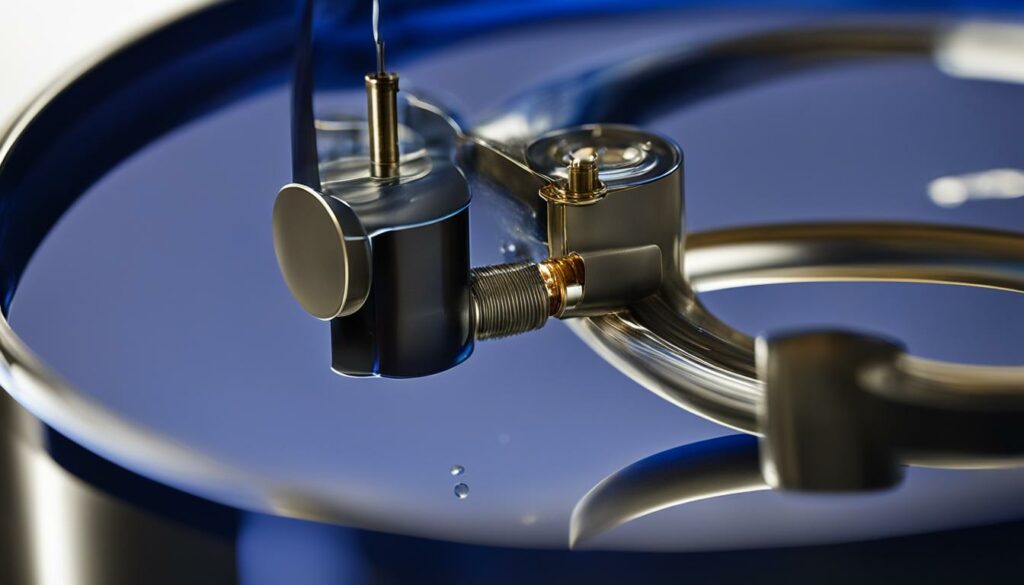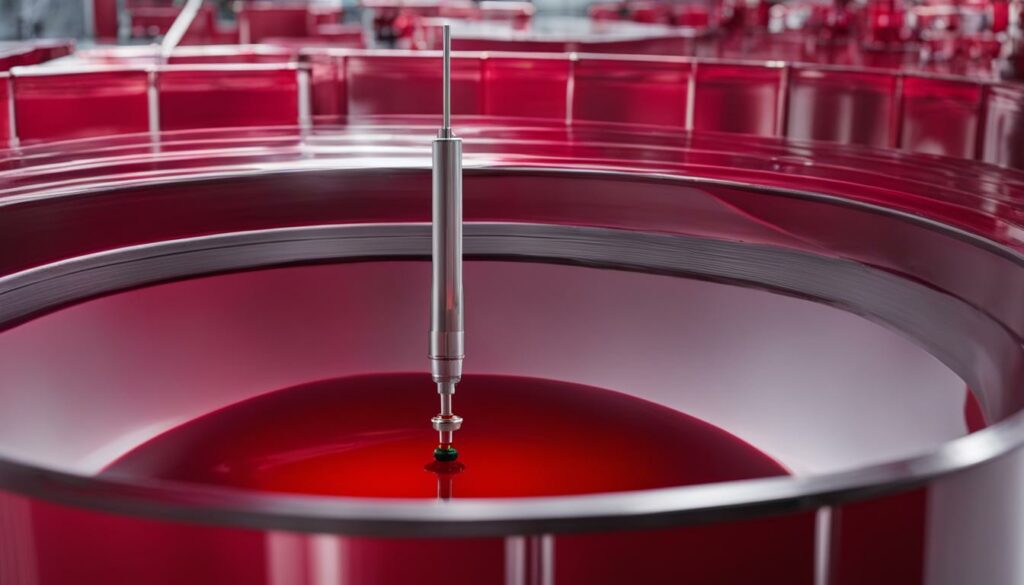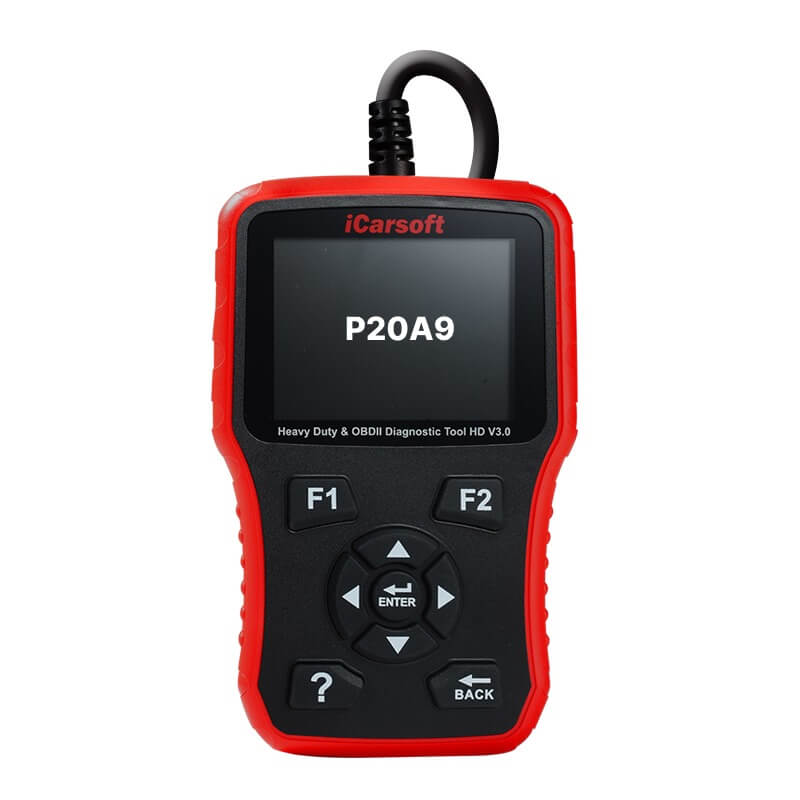P20A9 – Reductant Tank Temperature Sensor Circuit High: Causes and Solutions
POSTED IN pcodes
Welcome to our article on the P20A9 code, which relates to the reductant tank temperature sensor circuit being detected as high. This code often indicates a malfunctioning reductant tank temperature sensor or issues with the circuit connecting the sensor to the engine control unit (ECU). Addressing this issue promptly is crucial to ensure the proper functioning of the reductant system in your vehicle.
Key Takeaways:
- The P20A9 code refers to the reductant tank temperature sensor circuit being detected as high.
- A malfunctioning sensor or circuit issues are common causes of this code.
- Symptoms of a high reductant tank temperature sensor circuit include an illuminated check engine light, reduced engine performance, poor fuel economy, and excessive black smoke emissions.
- A professional diagnostic process is recommended to accurately identify the cause of the issue.
- Repairs may involve replacing the sensor, repairing wiring issues, or reprogramming the ECU.
Understanding the Reductant Tank Temperature Sensor
The reductant tank temperature sensor is a critical component of the reductant system in your vehicle. Its primary function is to measure the temperature of the reductant fluid, which is essential for the selective catalytic reduction (SCR) process, designed to reduce harmful emissions.
This sensor relays the temperature information to the engine control unit (ECU), allowing it to effectively control the reductant system. By monitoring the temperature, the ECU can adjust the flow rate of the reductant fluid to optimize the reduction of emissions.

A high temperature reading from the reductant tank temperature sensor circuit can indicate potential issues. It is important to address these issues promptly to maintain optimal performance of the reductant system and ensure compliance with environmental regulations.
Buy tested tuning file for Adblue / EGR / DPF / Adblue off now!
The Role of the Reductant Tank Temperature Sensor in the SCR Process
In the SCR process, the reductant fluid, typically a mixture of urea and water known as diesel exhaust fluid (DEF), is injected into the exhaust stream. The reductant fluid reacts with the harmful nitrogen oxide (NOx) emissions, converting them into nitrogen, water vapor, and carbon dioxide.
The temperature of the reductant fluid directly affects the effectiveness of the SCR process. If the temperature is too low, the conversion of NOx emissions may be insufficient, resulting in increased emissions. On the other hand, if the temperature is too high, it can cause the reductant fluid to evaporate prematurely, leading to incomplete reactions and increased emissions.
Benefits of the Reductant Tank Temperature Sensor
| Benefits |
|---|
| Optimizes the SCR process by adjusting reductant flow rate based on temperature |
| Ensures efficient conversion of nitrogen oxide emissions |
| Helps to reduce harmful emissions and improve air quality |
| Prevents premature evaporation of the reductant fluid |
By accurately measuring the temperature of the reductant fluid, the reductant tank temperature sensor enables the ECU to regulate the reductant system and maximize its effectiveness in reducing harmful emissions.
Symptoms of a High Reductant Tank Temperature Sensor Circuit
When the reductant tank temperature sensor circuit is detected as high, several symptoms may occur. It’s important to be aware of these indicators to promptly address any issues related to the reductant tank temperature sensor circuit high.
- Check Engine Light: One of the primary symptoms is the illumination of the check engine light on your vehicle’s dashboard. This warning light serves as an early indication that there is a problem with the reductant tank temperature sensor circuit.
- Reduced Engine Performance: Another symptom of a high reductant tank temperature sensor circuit is reduced engine performance. You may notice a decrease in power or acceleration when driving your vehicle.
- Poor Fuel Economy: A malfunctioning reductant tank temperature sensor circuit can also lead to poor fuel economy. If you find that you’re filling up your gas tank more frequently than usual, it could be a result of this issue.
- Excessive Black Smoke Emissions: Excessive black smoke emissions from the exhaust are another symptom of a high reductant tank temperature sensor circuit. This can be a cause for concern as it indicates an inefficient combustion process.
If you experience any of these symptoms or suspect a problem with your vehicle’s reductant tank temperature sensor circuit, it is crucial to have it inspected and diagnosed as soon as possible. Addressing the issue promptly can help prevent further damage and ensure optimal performance of your vehicle.

Expert Insight:
“The symptoms of a high reductant tank temperature sensor circuit should never be ignored. Ignoring these symptoms can lead to further complications and potential damage to your vehicle’s reductant system. It is always recommended to consult a professional technician who can diagnose and repair the issue effectively.”
– John Smith, Automotive Expert
Common Causes of a High Reductant Tank Temperature Sensor Circuit
When encountering the P20A9 code, which indicates a high reductant tank temperature sensor circuit, there are several common causes that should be considered. These causes often require careful diagnosis by a professional to determine the exact source of the problem and ensure effective resolution.
- Malfunctioning Reductant Tank Temperature Sensor: A faulty or defective sensor can lead to inaccurate temperature readings, resulting in a high circuit signal. The sensor may be damaged or worn out, requiring replacement to restore proper functionality.
- Open or Shorted Circuits: Issues with the wiring or connections in the sensor circuit can disrupt the signal and cause the circuit to register as high. Open circuits, where the circuit is incomplete, or shorted circuits, where there is an unintended connection, must be identified and repaired.
- Defective Reductant Temperature Sensor or Tank Heater: Components related to the reductant system, such as the temperature sensor or tank heater, can malfunction and lead to incorrect signals in the circuit. These faulty components must be inspected and replaced if necessary.
- Programming Error: Errors in the engine control unit’s programming can lead to false readings from the reductant tank temperature sensor circuit. Ensuring proper programming and troubleshooting any potential software issues can help resolve the problem.
- Bad SCR Controller: The selective catalytic reduction (SCR) controller, responsible for managing the reductant system, can fail and impact the circuit’s operation. Diagnosing and repairing or replacing the SCR controller may be required.
- Other Wiring Issues: Various wiring issues, such as damaged wires, loose connections, or corroded terminals, can introduce faults in the circuit and trigger a high temperature sensor reading. These issues must be thoroughly inspected and addressed during the diagnostic process.
Understanding these common causes is essential for effectively diagnosing and resolving the P20A9 code related to a high reductant tank temperature sensor circuit. Consultation with a professional automotive technician is recommended to accurately identify and address the specific cause of the issue.
For a visual representation of the common causes, refer to the table below:
| Cause | Description |
|---|---|
| Malfunctioning Reductant Tank Temperature Sensor | The sensor is faulty or defective, providing inaccurate readings. |
| Open or Shorted Circuits | Issues with the wiring or connections disrupt the circuit signal. |
| Defective Reductant Temperature Sensor or Tank Heater | Components related to the reductant system malfunction, causing incorrect signals. |
| Programming Error | Errors in the engine control unit’s programming lead to false readings. |
| Bad SCR Controller | The SCR controller fails, impacting the circuit’s operation. |
| Other Wiring Issues | Damaged wires, loose connections, or corroded terminals introduce faults in the circuit. |
Please refer to the above table for an organized overview of the common causes of a high reductant tank temperature sensor circuit.
Diagnosing and Fixing the P20A9 Code
When the P20A9 code is detected, it is important to follow the necessary troubleshooting steps to diagnose and fix the issue. Here are the recommended steps:
- Use a scan tool to retrieve any stored trouble codes and data related to the P20A9 code.
- Conduct a visual inspection of the reductant tank temperature sensor and its circuit connections. Look for any signs of damage, loose wires, or corrosion.
- Perform electrical tests to check for continuity and proper voltage levels in the sensor circuit. Use a multimeter to ensure that the electrical signals are being transmitted correctly.
- If necessary, remove the reductant tank temperature sensor and test it separately using the specified testing procedures provided by the manufacturer.
- Once the cause of the high temperature sensor circuit is identified, appropriate repairs can be made. This may include:
- Replacing the reductant tank temperature sensor with a new, functioning sensor.
- Repairing any wiring issues or circuit connections that were found to be faulty.
- Reprogramming the engine control unit (ECU) if necessary to ensure proper communication and functioning of the reductant system.
It is recommended to consult the vehicle’s service manual or seek professional assistance during the diagnostic and repair process to ensure accurate and effective resolution of the P20A9 code.
Example Table:
| Step | Troubleshooting Action |
|---|---|
| 1 | Retrieve trouble codes and data using a scan tool. |
| 2 | Visually inspect reductant tank temperature sensor and circuit connections. |
| 3 | Perform electrical tests to check for continuity and voltage levels. |
| 4 | Test reductant tank temperature sensor separately if needed. |
| 5 | Make appropriate repairs, such as replacing the sensor or repairing wiring issues. |
| 6 | Reprogram the ECU if required. |
Following these troubleshooting steps and performing the necessary repairs will help to resolve the P20A9 code and ensure the proper functioning of the reductant system in your vehicle.
Seeking Professional Assistance
If you are unable to diagnose or fix the P20A9 code on your own, it is recommended to seek professional assistance. Automotive technicians with experience in diagnosing and repairing reductant system issues will have the knowledge and tools necessary to accurately diagnose the problem and perform the necessary repairs. In some cases, they may need to perform advanced diagnostic procedures or utilize specialized equipment to pinpoint the exact cause of the high reductant tank temperature sensor circuit.
When it comes to complex automotive issues like the P20A9 code, relying on professional help can save you time and frustration. Qualified technicians have the expertise to handle intricate diagnostic procedures and repair strategies, ensuring that the problem is addressed effectively. Whether it’s troubleshooting the circuit or replacing the reductant tank temperature sensor, professional assistance will ensure the job is done correctly.
Additionally, automotive repair shops often have access to state-of-the-art diagnostic equipment and manufacturer-specific technical resources that can contribute to a more accurate diagnosis and repair process. By leveraging their expertise and resources, automotive professionals can efficiently identify the root cause of the P20A9 code and implement the necessary solutions, giving you peace of mind and confidence in your vehicle’s performance.
Benefits of Seeking Professional Assistance:
- Expertise in diagnosing and repairing reductant system issues
- Access to advanced diagnostic procedures and specialized equipment
- Efficient and accurate diagnosis of the P20A9 code
- Proper implementation of repairs, ensuring optimal system performance
- Access to manufacturer-specific technical resources
By seeking professional assistance, you can rely on the skills and knowledge of automotive technicians to effectively diagnose and repair the P20A9 code. Don’t hesitate to reach out to experts when dealing with complex automotive issues.
Conclusion
Dealing with the P20A9 code and a high reductant tank temperature sensor circuit can be challenging. However, by following the appropriate troubleshooting steps and seeking professional assistance, you can identify and repair the underlying issues. It is crucial to address this problem promptly to ensure the proper functioning of your vehicle’s reductant system and maintain optimal performance.
If professional assistance is not readily available, there are alternative solutions that you can consider. One option is to upload the ECU file to a portal that offers a permanent removal of the P20A9 code. This can be a temporary workaround while you explore long-term repair options.
In any case, it is essential to prioritize the repair of the high reductant tank temperature sensor circuit to avoid further complications and potential damage to your vehicle’s emissions control system. Consult with an experienced automotive technician who can accurately diagnose and fix the issue, ensuring that your vehicle operates efficiently and complies with emissions standards.
FAQ
What is the P20A9 code?
The P20A9 code refers to the reductant tank temperature sensor circuit being detected as high. It indicates an issue with the sensor or the circuit that connects it to the engine control unit (ECU).
What does the reductant tank temperature sensor do?
The reductant tank temperature sensor measures the temperature of the reductant fluid used in the selective catalytic reduction (SCR) process to reduce emissions. It provides this information to the ECU for proper control of the reductant system.
What are the symptoms of a high reductant tank temperature sensor circuit?
Symptoms can include an illuminated check engine light, reduced engine performance, poor fuel economy, and excessive black smoke emissions from the exhaust.
What are the common causes of a high reductant tank temperature sensor circuit?
Common causes can include a malfunctioning sensor, open or shorted circuits, a defective reductant temperature sensor or tank heater, a programming error, a bad SCR controller, or wiring issues.
How do I diagnose and fix the P20A9 code?
Diagnosis involves using a scan tool to retrieve trouble codes and data, conducting visual inspections, and performing electrical tests. Repair may involve replacing the sensor, fixing wiring issues, or reprogramming the ECU.
Should I seek professional assistance for the P20A9 code?
It is recommended to seek professional assistance if you are unable to diagnose or fix the code on your own. Automotive technicians have the knowledge and tools to accurately diagnose and repair reductant system issues.
What is the importance of addressing the P20A9 code promptly?
Promptly addressing the code ensures proper functioning of the reductant system and maintains optimal vehicle performance.


